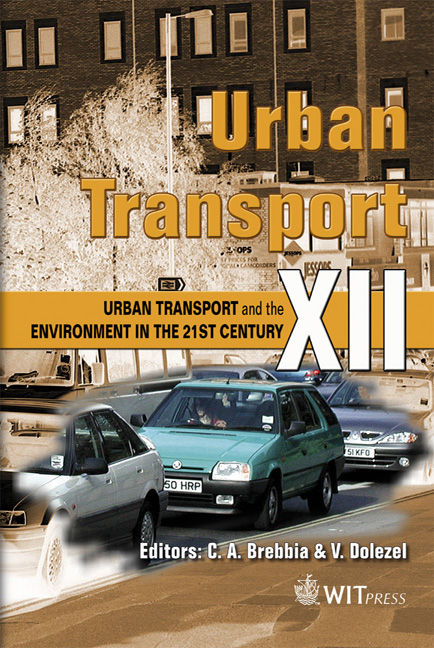Simulation Of Alternative Implementation Scenarios For The Metro System In Seville
Price
Free (open access)
Transaction
Volume
89
Pages
10
Published
2006
Size
494 kb
Paper DOI
10.2495/UT060761
Copyright
WIT Press
Author(s)
J. Muñuzuri, J. N. Ibáñez, P. Cortés & J. Guadix
Abstract
The building of the Metro system in Seville is clearly defined in terms of the network layout, but not so much in terms of the final configuration of the lines. For some of them, due to cost criteria, on-surface tracks are being considered, which would clearly have an effect both on the public transport system and on the passenger car traffic around it, due to the reduction of road space. A macroscopic simulation approach, using the commercial package EMME/2, is used to assess the effects of such implementation, and thus estimate the feasibility of the different Metro Lines. The required O-D matrix modifications to represent the scenarios considered and the upgrading of the city network are described in the paper, as well as the conclusions drawn from the simulations. Keywords: Metro, macroscopic simulation, O-D matrices. 1 The Metro system in Seville 1.1 Configuration of the lines The planned Metro system in Seville [1] is composed of four lines, as depicted in Figure 1. Lines 1 and 2 have an East-West trajectory, while Line 3 runs from North to South and Line 4 is circular. Line 1 is already under construction, and is expected to start operating in 2008, with Lines 3, 2 and 4 to follow, still without expected dates. Line 1 runs from Ciudad Expo, on the South-West of the city, to Olivar de Quinto, on the South-East. This line will have an effect on the number of passengers using other transport modes, but not on the configuration of the road network, since most of its route inside the urban area runs underground, and does not affect the existing road system outside of it.
Keywords
Metro, macroscopic simulation, O-D matrices.





